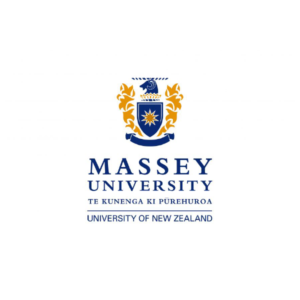Massey University is one of Aotearoa New Zealand’s largest universities with more than 25,000 students, including 4,000 international students from over 100 countries. Massey is Aotearoa New Zealand’s only fully multi-campus institution, with locations in Auckland, Palmerston North, and Wellington and is the country’s leading university for Online Education.
We offer more than 100 degrees, diplomas, and certificates through our colleges of Business, Health, Humanities and Social Sciences, Creative Arts, and Sciences. Our research and academic programmes link closely with industry, society, and global issues. Massey provides opportunities for full-semester internships and high-performance training programmes for student-athletes.
Our students are well cared for though a range of academic, health, and wellbeing support services. Student clubs and societies abound with opportunities to make friends, find community, and share life together in Aotearoa New Zealand.
Academic: GPA of 3.0 or above on their studies to date
English Language:
– IELTS: 6 (no subscores below 5)
– TOEFL iBT: 80 (no subscores below 19)
– Duolingo English Test: not accepted
Never had TB/TBC infection
10 July 2024 – 11 November 2024
Available Courses
In this course, students from a broad range of creative practices will work together to conceptualise and create innovative offerings to experience and reflect upon collaboration as creative citizens.
The application of information processing strategies for improving performance in learning, problem-solving, decision-making, interpersonal interrelations, coping in situational anxiety and mental rehearsal.
A collaborative capstone that requires students to apply business analytics techniques to develop business opportunities, while considering the ethical, security, privacy and legality issues of data acquisition and processing.
Advanced study in models of computation, programming languages and algorithms with a specific focus on concurrent programming. The course includes models of computation, programming language paradigms, programming language design, algorithm analysis, processes, threads, synchronisation and parallel programming.
The principles and practice of conservation and management of populations. Ecological principles are applied to the sustainable use of natural resources including conservation of threatened species and fisheries management. The practical component includes statistical analysis and modelling. There is a compulsory field trip day.
The course provides an applied service learning project in the disciplines of expressive arts and media studies. Working collaboratively, students apply skills in theatre, performance, film-making, creative writing, media practice or mixed media to developing a creative response to a social issue or community need.
This course explores how social media shapes identities, social relationships, work, politics and societies. From fake news to social media influencers, this course examines how digital technologies play a key role in shaping everyday life in the twenty-first century.
The central goal of the course is to consider how knowledge is represented and processed in the brain. Students will be introduced to the mental processes involved in thinking and knowing, studied within a converging methods framework that includes evidence from experimental psychology, neuroscience, neuropsychology, and cognitive science.
Study a range of perspectives on the nature, purpose and value of creative work, exploring theoretical positions to develop cognitive tools for the analysis of practice and research. Students are enabled to develop strategies of collaboration and communication within group environments and to employ reflective and analytical approaches.
This course develops students’ foundational analytical and critical thinking skills. It is designed to provide students in any discipline with the ability to describe, evaluate, and generate reasoning / arguments effectively, appropriately, and sympathetically, alongside an understanding of the hidden complexities inherent in this approach and its limits when employed as a form of persuasion.

